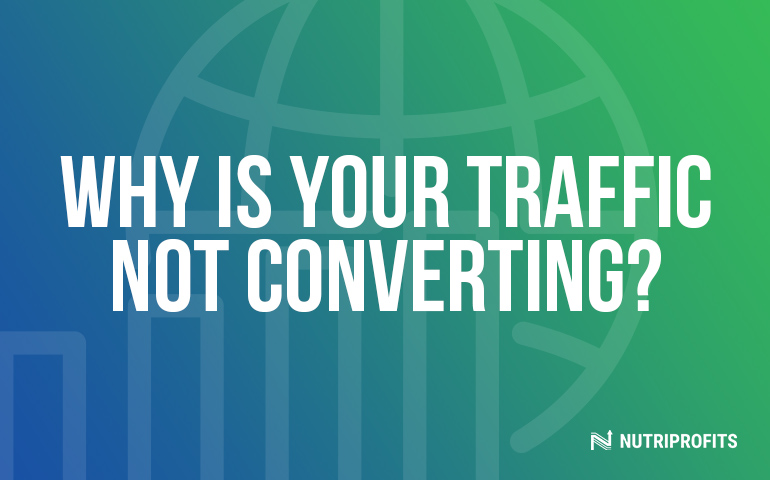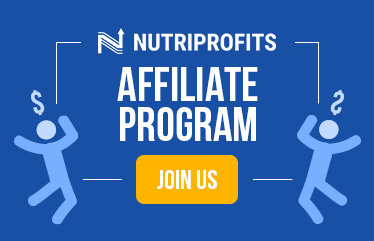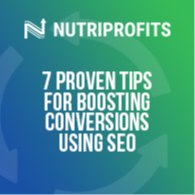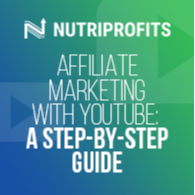Just because someone’s getting traffic on their website doesn’t mean they’re getting sales. Many affiliate marketers believe that traffic equals conversion or sales, so they often get disappointed when they get some traffic but little sales.
Why does that happen? There may be a few reasons someone’s traffic may not convert.
How Can You Get Traffic?
Everyone wants to be noticed and gain sales, but how does that happen? How can someone stand out from others and convert their traffic?
There are many ways to do this. Some proven ways are starting a podcast or channel, writing guest posts, using keyword research and internal links, using social media, and starting a newsletter.
Possible Reasons Why Your Traffic Is Not Converting
If a person uses some of the before-mentioned methods of getting traffic but still isn’t getting sales, there may be some reasons.
Reason One: Not Knowing the Audience
The first thing any affiliate marketer should know is who their audience is. What’s the average age? Where are they usually coming from? What are they interested in?
If affiliate marketers don't know their audience, they are doomed to fail. For example, if they’re trying to sell gardening-related products, they might not want to aim toward people who are into sports.
When the affiliate marketer has gained the audience’s trust, then most consumers will share their opinions with the marketer. The marketer will then know their audience better and be more able to serve their consumers.
Reason Two: Ineffective Marketing Funnel
Suppose the affiliate marketer is gaining traffic on their website from a suitable audience. That’s great! However, they’re still not gaining any sales. How can that be?
This could be due to an ineffective marketing funnel. The affiliate marketer’s audience may not be reacting as intended. That means checking out a user flow.
A user flow shows a path users take for completing a task–particularly buying a product. User flows are essential for affiliate marketers to see how their consumers use their system.
Affiliate marketers can improve their user flow by constructing their websites to make it easier to browse and buy. It’s best to design a website with pages and navigations matching what the affiliate marketer wants their consumers to do.
The affiliate marketer will also need an aim for each page. For example, a blog post can influence someone to sign up for the marketer’s email list, while a PPC landing page can influence someone to buy a product.
It’s not uncommon to have many users flows. More user flows to meet the different needs of different consumers. However, each landing page must herd consumers into the following flow with a clear benefit. That way, the affiliate marketer’s traffic is more likely to convert.
Reason Three: An Outdated Website
Technology is updating rapidly, so affiliate marketers must stay up-to-date on the latest technology. Keeping outdated technology, like an outdated website, might turn consumers away. Thus, there will be no conversions.
This is a straightforward fix. One way to keep a website up-to-date is to make it responsive to all sorts of devices. More people are using tablets and mobile phones for browsing than desktop computers. A website not responding to these devices will turn away consumers.
The affiliate marketer’s content also needs to be updated. When marketer updates their website, they improve their user flow. For example, consumers from varying sources end up on the funnel’s different pages. Thus, only relevant content is shown when a new consumer visits the website.
The way to update a website and gain conversions is by keeping things simple. Consumers like it when a website is easy to use and navigate. The easier the website is to use, the more likely consumers will buy products.
The affiliate marketer may have to pay a fee when updating a website. However, it’ll be well worth it to keep connecting with consumers.
Reason Four: Lack of Nurtured Leads
Suppose someone goes on a website and browses for a bit. They see something they like but exit and never return. How could this be?
That scenario may happen if the affiliate marketer doesn’t nurture their leads, aka their consumers. This is a tricky step for affiliate marketers since building relationships is complex.
However, nurturing leads to understanding and moving through the marketer’s sales funnel is vital. Most companies claim their leads need a long sales cycle with many influencing elements before becoming consumers.
One way to nurture leads is to keep in contact with them. Keeping in touch with the consumer will build a relationship and increase conversions.
Some ways to keep in touch with consumers include emails, live chats, social media, SMS, and phone calls. Using a combination of these methods can increase consumer relationships and conversions.
The more a lead is nurtured, the more likely they are to buy a product. That’s why companies focusing on nurturing leads end up with more consumers and conversions.
Reason Five: Lack of Creativity
The affiliate marketer works hard to know their audience, improve their marketing, update their website, and nurture their consumers. However, they’re still not gaining more conversions. How come?
Maybe the affiliate marketer needs to try harder, or maybe the marketer’s products aren’t good enough. Affiliate marketing is stiff competition, so the marketer must sell as many products as possible.
One way to do so is to provide something that’ll make the affiliate marketer stand out. Standing out will make consumers more likely to notice and buy their products.
It also helps to understand why consumers buy these products. What is the affiliate marketer selling, and what do consumers want? The affiliate marketer needs to frame these questions uniquely.
Creativity helps a lot with gaining conversions. For example, more consumers will buy a product if the affiliate marketer shows the dollar value and how much they can save when buying and using it.
Free offers are also great ways to gain conversions. They drive future high-value sales by leveraging initial sales.
Finally, the affiliate marketer needs to see their end goal as several smaller steps. By doing this, they can showcase their products in many creative ways.
Reason Six: Not Optimizing Campaigns
After following the recommended steps before-mentioned, it’s time for the affiliate marketer to optimize their campaigns. How will they do that?
The best way to achieve this is by A/B testing ads. A/B testing is tricky to master since most people use pop-up blockers and anti-ad guards. In fact, someone’s more likely to survive a plane crash than click a banner ad. So, how would the affiliate marketer master A/B testing?
There are four essentials the affiliate marketer needs to consider before A/B testing: pictures, text, designs, and call-to-actions.
Pictures are worth 1,000 words, so an eye-popping one on-topic will attract more consumers. Catchy text jingles can also attract consumers. Combining these two into an appealing design will surely grab people’s attention, and don’t forget the call to action!
Once the affiliate marketer is finished with that, the A/B testing begins. It’s best to test two variations of the same banner to see which one works better. Some websites will A/B test banners for the marketer.
Conclusion
Just because someone’s getting traffic on their website doesn’t mean they’re getting sales. The best ways to gain sales or conversions include knowing the audience, marketing effectively, updating a website, nurturing leads, making products appealing, and optimizing campaigns.





.jpg)

-1-1.jpg)